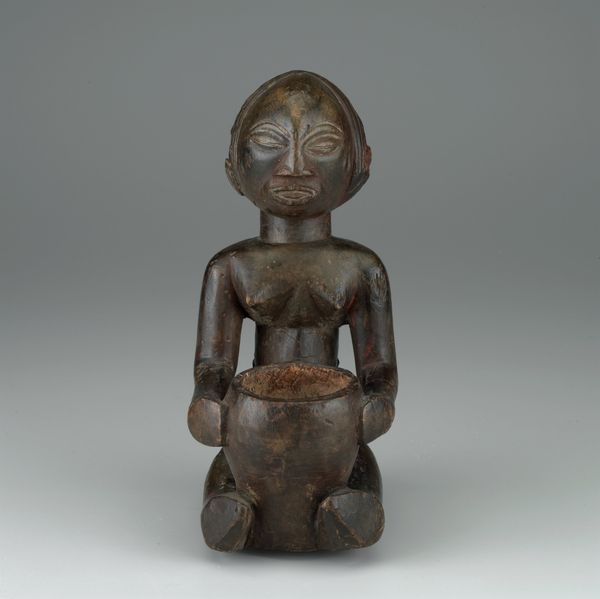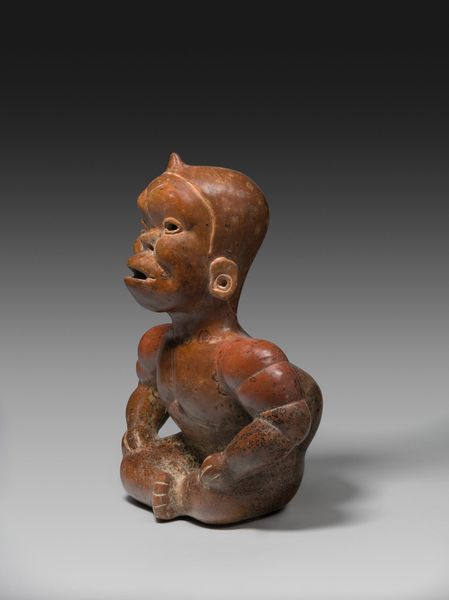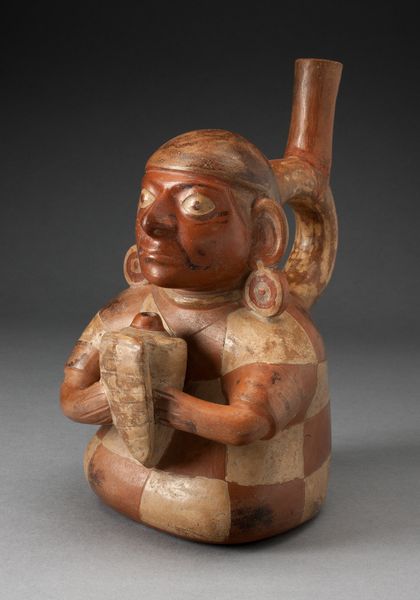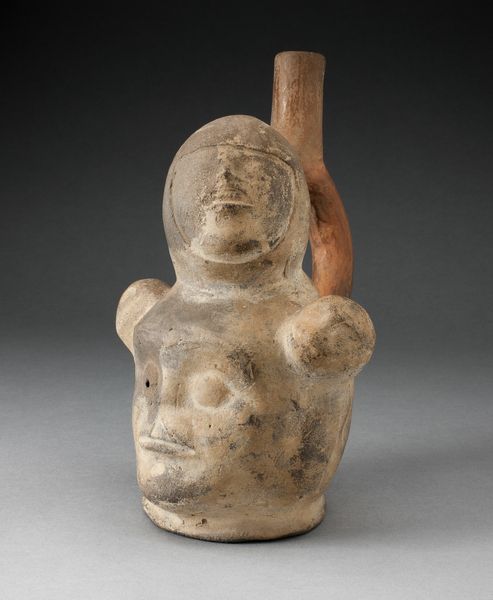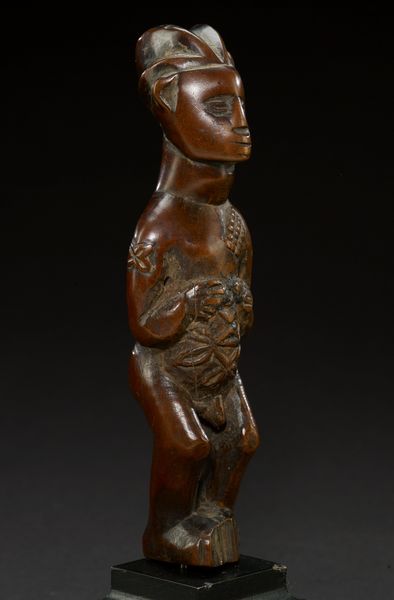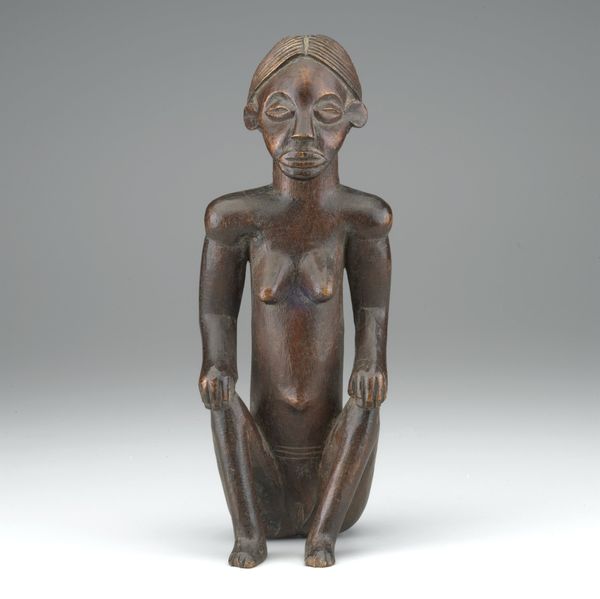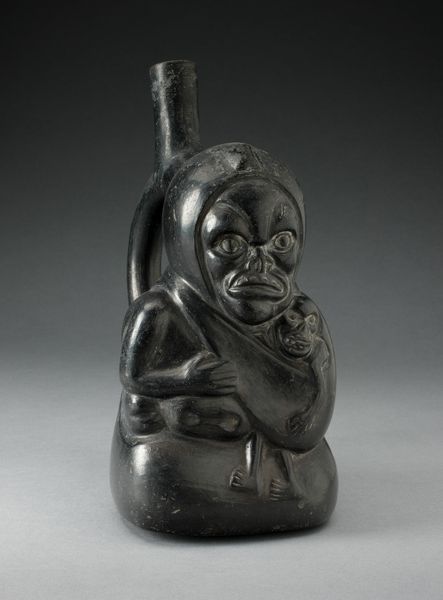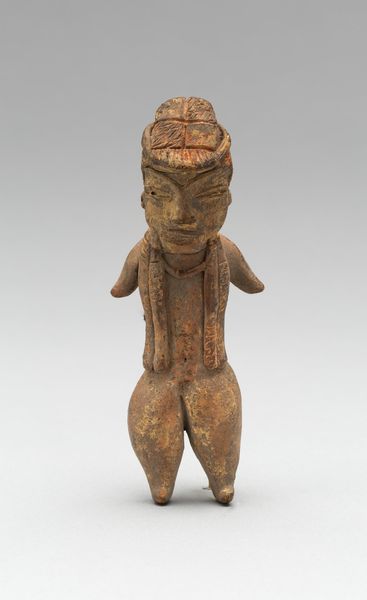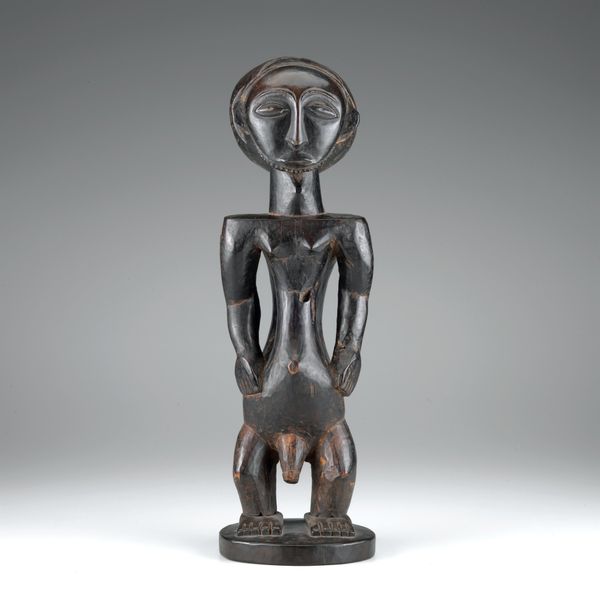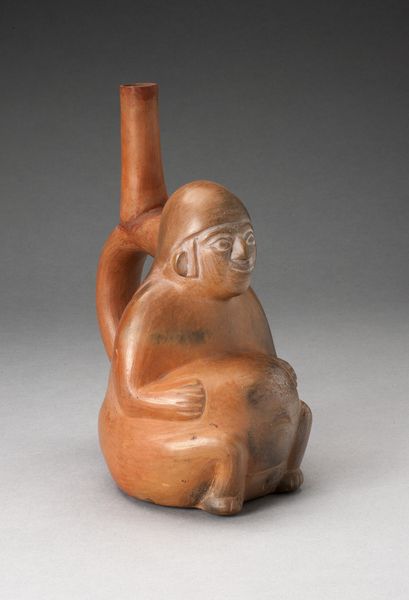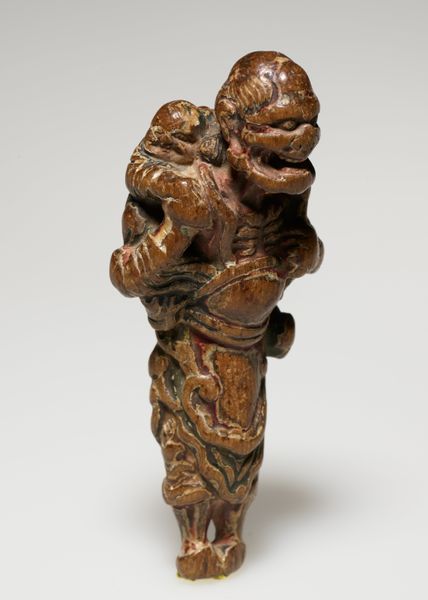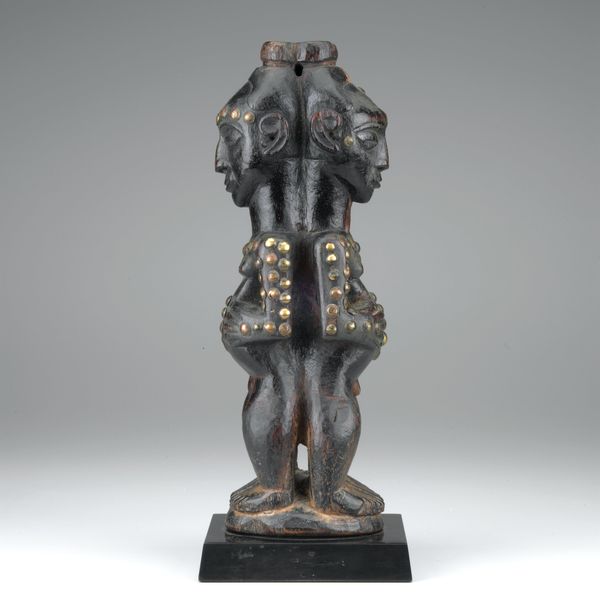
sculpture, ivory
#
portrait
#
african-art
#
narrative-art
#
sculpture
#
figuration
#
sculpture
#
yoruba-art
#
ivory
Dimensions: 9 9/16 x 2 1/2 x 2 7/8 in. (24.29 x 6.35 x 7.3 cm) (including attached base)
Copyright: Public Domain
Curator: At first glance, I see such delicate poise and muted tones, a calming sculpture despite the subject’s implications of labor and responsibility. Editor: Indeed. This piece, known as "Maternity Figure", dates from around the 18th century and comes from the Yoruba people. You can currently find it here at the Minneapolis Institute of Art. What we're looking at is an ivory sculpture of a woman kneeling. Curator: The composition is so tightly wound, almost spiraling upwards. Her form contains her head and torso wrapping around the large globular object, flowing toward the smaller child. This positioning creates interesting visual tensions and releases that play into its singular impact. Editor: It’s a complex iconography rooted in Yoruba culture, especially regarding the celebration of motherhood and fertility. Note how she's also carrying a child on her back, referencing lineage and the continuum of generations. Such figures would've played significant roles within social structures. Curator: Observe the stylistic choices—the elongated features, the carefully articulated hairstyle, even the slight tilt of her head. These elements communicate both a physical likeness and a deeper, symbolic meaning. Is this portrait meant to be celebratory or reverential? Editor: More than just a representation of the ideal woman, her body reflects her status within the Yoruba community and alludes to power dynamics related to womanhood, lineage and motherhood in 18th century society. It challenges the notion of simply reading form; we must consider her role. Curator: Right, and beyond historical placement, the visual balance remains, doesn’t it? How each shape supports the other. I’m struck by the level of craftsmanship apparent in the details carved into such a compact object, all working in support of its balanced composition. Editor: Precisely. Acknowledging its context deepens our encounter with the formal choices of the artist, which then adds another layer to how we connect and understand across culture and history. Curator: Seeing the figure through its artful crafting helps highlight the deeper understanding of cultural and historical value of the represented ideal. Editor: And thinking about these dynamics allows us to connect to "Maternity Figure" not merely as an object, but as an expression of societal forces as expressed through the vision of an individual creator and community values.
Comments
No comments
Be the first to comment and join the conversation on the ultimate creative platform.
